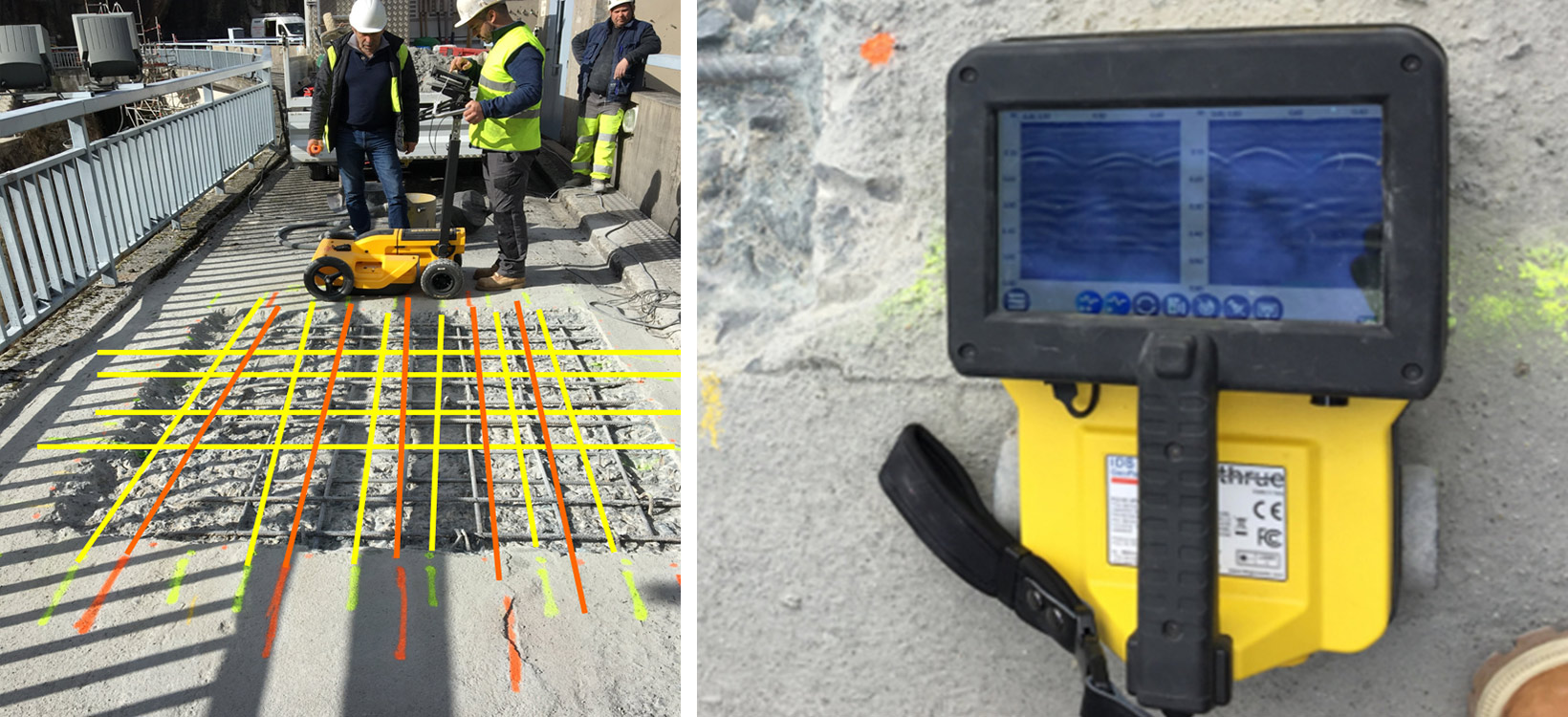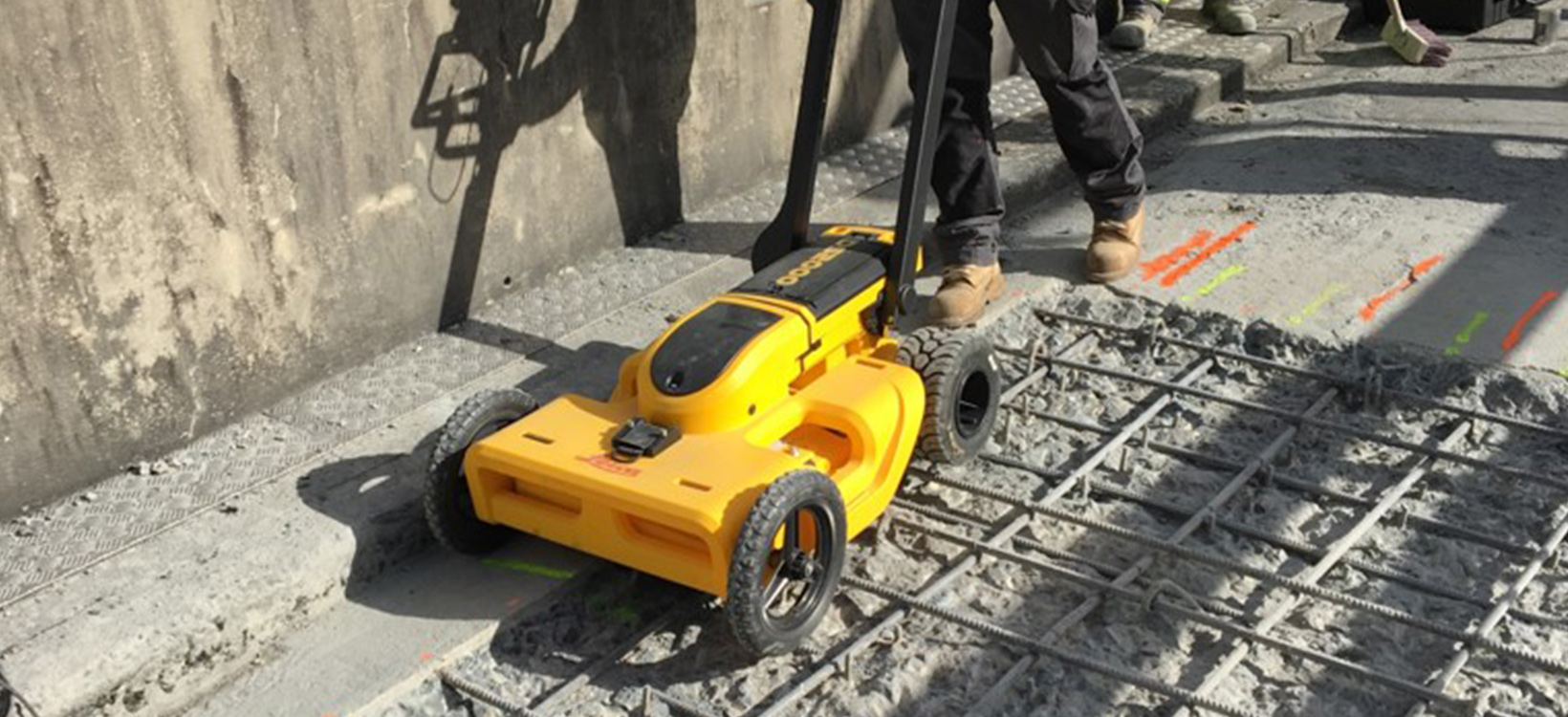Like Superman - Seeing through walls and concrete structures
Case study

Author: Reka Vasszi
Regular monitoring and maintenance, as well as comprehensive inspection, ensure dams remain in a safe and working condition throughout their lifetime. The early detection of deficiencies can, furthermore, prevent failures. Precautionary operations, such as daily inspections of facility conditions or repairing defective spillways, gates and valves are among the routine maintenance activities of dam operators.
Reaching the ambiguous areas for inspection on the dam’s downstream face can be challenging considering the height and accessibility of the dam’s apron. To reach the valves and carry out maintenance work on the Barthe dam in France, MEIJE, an electromechanical company, and the Electricite de France (EDF), producer of renewable electricity, came up with a solution. With the help of a winch mounted on a crane (metal portic) built on the upper apron of the dam, professionals can descent down to perform maintenance on the valves.
The project was quite challenging. To construct the crane, the team had to drill 20, 80-centimeter-deep holes into reinforced concrete, where three different layers of steel bars located at three different depths – 10, 30 and 50 cm deep from the surface. To avoid hitting the steel grids, the team requested GéoSudOuest, a surveying company, to precisely locate the buried assets.
Tracing on the go

In accordance with the company’s principles; “privilege the person and the quality of work,” GéoSudOuest experts deliver tailor-made, effective solutions for their customers.
With the need to locate and avoid the steel grid while drilling the holes into the upper apron of the dam, the customer required a real-time tracing and imagining solution.
GéoSudOuest professionals used the Leica DS2000, utility detection radar together with C-thrue, all-in-one Ground Penetrating Radar (GPR) to precisely visualise and analyse in real time buried assets before drilling into concrete. Once the layers of steel bars were detected with the DS2000, the team used the C-thrue to confirm and double check the results. Thanks to the dual antenna polarisation of both GPR, the team simultaneously detected the rebars at both deep and shallow levels and determined their exact position within a range of 80 cm depth.
“Despite the difficulty related to the dense rebars, GéoSudOuest team could detect the buried assets with high accuracy. Leica Geosystems’ solutions allowed us to properly locate the position of the rebars at each level,” said Boulade Gérard, surveying expert at GéoSudOuest.
The automatic position and navigation system of the DS2000 increased productivity and saved survey time for GéoSudOuest. Once data was collected, experts analysed the hyperbolic signatures with intersections to estimate the location and size of the target. After verifying the results, the team marked the surface with yellow and orange lines signing where the rebars were running at different depths.
Revealing reliable data

Unless we possess Superman's wondrous vision, GPR is the most reliable tool for effectively locating underground utilities. Accurate scanning and real-time analysis of the dam’s upper apron enabled the team to safely locate and drill the 80-cm-deep holes avoiding the rebars crossing at different levels to perform the maintenance work needed.
The DS2000 and C-thrue revealed reliable data in real time, and the real-time visualisation helped the team to make optimal decisions on the spot.
























